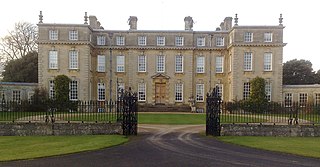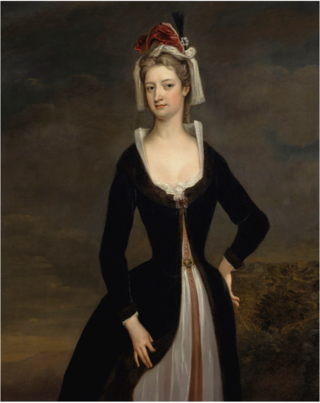Critical reception
In her review in Apollo , Susan Jenkins encapsulated Cornforth's intentions when she averred that with the selection of inventories in the book, "Cornforth hoped to inspire another generation of scholars to take his work forward into the 21st century". [17] This view was endorsed by James Miller when he wrote in the Times Literary Supplement , "It is to be hoped that more inventories will now be published as they are the bedrock of the understanding of the taste of a particular period." [18]
Writing in the Burlington Magazine , Andrew Moore saw the book as "an important step in the wider recognition of archival studies in relation to the social and cultural history of England"; [19] whereas John Harris writing in the Art Newspaper acknowledged the usefulness of the book's index, when he declared that it "demonstrates the value of inventories for an understanding of the furnished interior'. [20]
Reviewing the book for Studies in the Decorative Arts, the Bard Graduate Center's journal, [21] Simon Swynfen Jervis commented that "When inventories are reasonably comprehensive and are ordered room by room ... —and this applies to all those in Noble Households—they are difficult to surpass as documents of most aspects of interior decoration." [22]

Marlborough House, a Grade I listed mansion on The Mall in St James's, City of Westminster, London, is the headquarters of the Commonwealth of Nations and the seat of the Commonwealth Secretariat. It is adjacent to St James's Palace.

Earl of Lichfield is a title that has been created three times, twice in the Peerage of England and once in the Peerage of the United Kingdom (1831). The third creation is extant and is held by a member of the Anson family.

The title of Duke of Montagu has been created twice, firstly for the Montagu family of Boughton, Northamptonshire, and secondly for the Brudenell family, Earls of Cardigan. It was first created in the Peerage of England in 1705 for Ralph Montagu, 3rd Baron Montagu of Boughton, with the subsidiary title Marquess of Monthermer, but became extinct in 1749. The 1st Duke had been created Earl of Montagu and Viscount Monthermer in 1689. The Dukedom was then recreated in the Peerage of Great Britain in 1766 for the late Duke's son-in-law George Brudenell, 4th Earl of Cardigan, who adopted the surname of Montagu. On his death in 1790 the dukedom and marquessate became extinct a second time, but the earldom passed to his brother, James Brudenell, 5th Earl of Cardigan.

Baron Montagu of Boughton is a British title which has been created twice for members of the Noble House of Montagu. First created in 1621, in the Peerage of England, for Sir Edward Montagu, eldest son of Sir Edward Montagu of Boughton and grandson of another Sir Edward Montagu who had been Lord Chief Justice during the reign of Henry VIII. He was also the brother of Henry Montagu, later created Earl of Manchester, and of Sidney Montagu, ancestor of the Earls of Sandwich.

Ralph Montagu, 1st Duke of Montagu was an English courtier, diplomat, politician and peer.

John Montagu, 2nd Duke of Montagu,, styled Viscount Monthermer until 1705 and Marquess of Monthermer between 1705 and 1709, was a British peer.

Montagu House was a late 17th-century mansion in Great Russell Street in the Bloomsbury district of London, which became the first home of the British Museum. The first house on the site was destroyed by fire in 1686. The rebuilt house was sold to the British Museum in 1759, and demolished in the 1840s to make way for the present larger building.

Montagu House in Whitehall, Westminster, London, England, was the town house built by John Montagu, 2nd Duke of Montagu (1690–1749), whose country seat was Boughton House in Northamptonshire.

Ditton Park, Ditton Manor House or Ditton Park House was the manor house and private feudal demesne of the lord of the Manor of Ditton, and refers today to the rebuilt building and smaller grounds towards the edge of the town of Slough in England. A key feature is its centuries-old moat which extends to most of the adjoining lawns and garden. Park areas extend to the north and west of the moat.

Boughton House is a country house in the parish of Weekley in Northamptonshire, England, situated about 3 miles (4.8 km) north-east of Kettering. It is situated within an estate of 11,000 acres (4,451.5 ha).

Admiral Peregrine Osborne, 2nd Duke of Leeds, styled Viscount Osborne between 1673 and 1689, Earl of Danby between 1689 and 1694 and Marquess of Carmarthen between 1694 and 1712, was an English Tory politician.

George Henry Lee II, 3rd Earl of Lichfield PC (1718–1772) was a British politician and peer. He was made a Privy Councillor and Captain of the Gentlemen-at-Arms in 1762, holding both honours until death. Previously, he had served as member of parliament for Oxfordshire from 1740 until acceding to the peerage in 1743.
George Henry Lee I, 2nd Earl of Lichfield (1690–1743) was a younger son of Edward Henry Lee, 1st Earl of Lichfield and his wife Charlotte Fitzroy, an illegitimate daughter of Charles II by his mistress, the celebrated courtesan Barbara Villiers. On 14 July 1716 George Henry Lee succeeded his father as the 2nd Earl of Lichfield.
Events from the year 1709 in Great Britain.

Ditchley Park is a country house near Charlbury in Oxfordshire, England. The estate was once the site of a Roman villa. Later it became a royal hunting ground, and then the property of Sir Henry Lee of Ditchley. The 2nd Earl of Lichfield built the present house, designed by James Gibbs, in 1722. In 1933, the house was bought by an MP, Ronald Tree, whose wife Nancy Lancaster redecorated it in partnership with Sibyl Colefax. During the Second World War Winston Churchill used the house as a weekend retreat, due to concerns that his official country house, Chequers and his private country home, Chartwell, were vulnerable to enemy attack. After the war, Tree sold the house and estate to the 7th Earl of Wilton, who then sold it in 1953 to Sir David Wills of the Wills tobacco family. Wills established the Ditchley Foundation for the promotion of international relations and subsequently donated the house to the governing trust.
James Moore was an 18th-century cabinet maker in London who worked for George I. He was in partnership with John Gumley from 1714. As royal cabinet-maker he supplied walnut and mahogany furniture for the royal household, the royal yacht, and the king's servants and mistresses, as well as the rich gilt gesso furniture for which he is best known but which constituted a small part of his output.

Lady Elizabeth "Betty" Germain was a wealthy English aristocrat and courtier, a philanthropist and collector of antiquities, who corresponded with literary and political figures.

Mary Montagu, Duchess of Montagu, formerly Lady Mary Churchill, was a British court official and noble, the wife of John Montagu, 2nd Duke of Montagu. She was the youngest surviving daughter of John Churchill, 1st Duke of Marlborough, and his wife, Sarah.
John Lewley Cornforth CBE was an architectural historian with a particular interest in the history of English country houses. He was the author of many books and articles, and architectural editor of Country Life from 1967 to 1977.

Great Irish Households: Inventories from the Long Eighteenth Century presents in a single volume transcripts of inventories of fourteen great country houses, three Dublin town houses and one London town house, published as a tribute to the last Knight of Glin. The inventories, all but two published for the first time, span the period from 1702, the year of William of Orange's death, to 1821, the year of George IV's coronation.
















